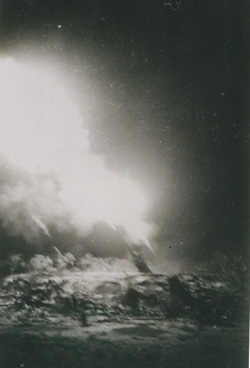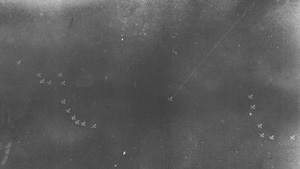| Because these devastating sorties against the Japanese were
made from Fenton Field, it was only a matter of time before
the enemy would retaliate. And 133rd HAA Bty had to ensure the
safety and protection of all the personal and equipment based
at Fenton.
On 30th June 1943, 6 days after the 133rd arrived and on
6 July 1943, Fenton Airfield was attacked by no less than
48 Japanese bomber and fighter planes. Over the next 5 months,
Fenton endured many more enemy air raids and the Japanese
dropped over 4oo bombs.
The 133rd fired in excess of 1100 rounds and were credited
with firing more rounds at the enemy, than any other 3.7 mobile
Battery in the South West Pacific Area during 1943.
As a result, out of those 400 or so bombs the Japanese dropped
at Fenton, many of these missed their target.
An Intelligence Report in the War Diaries
stated that:
'The eight 3.7 guns
of the 133rd HAA Battery at Fenton,
engaged the enemy on each occasion
and it is considered that the fire from these guns had a highly
deterrent effect'
 |
Gun salvo, during night raid Fenton 1943.
As the guns fired their 'salvo' the whole gun park
trembled, the air instantly filled with smoke and fumes
from the explosion. The force of the projectile leaving
the barrel would cause the gun to jump backwards with
the long barrel recoiling and at the same time the spent
case was extracted to the rear.
Chaffey collection
|
|
It is worth noting, that on 6th July, enemy raid No.
58, the 133rd shell bursts were able to rock the head
of the enemy formation. This bomber fell out of the
formation immediately, while the rest of the bombers
broke away sharply. The 'Betty' bomber was seen to be
aflame, trailing smoke and losing height rapidly.
Note middle bomber with smoke trailing.
Darvell collection
|
 |
|
